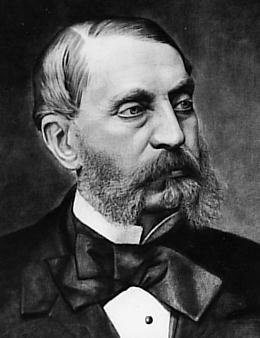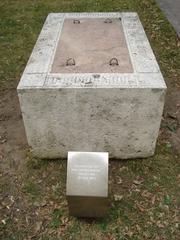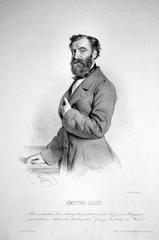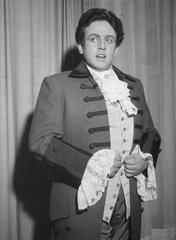
Vienna State Opera House: Visiting Hours, Tickets, and Historical Significance
Date: 14/06/2025
Introduction
The Vienna State Opera (Wiener Staatsoper) stands at the heart of Vienna’s vibrant cultural landscape, representing a pinnacle of both architectural grandeur and musical excellence. Since its grand opening in 1869 with Mozart’s Don Giovanni, the opera house has not only defined Vienna’s artistic identity but also served as a beacon for classical music enthusiasts worldwide. Its Neo-Renaissance facade, opulent interiors, and commitment to both tradition and innovation make it a must-visit destination for travelers, music lovers, and history aficionados. This comprehensive guide offers detailed insights into visiting hours, ticketing, guided tours, accessibility, and the opera’s enduring cultural role in Vienna.
Table of Contents
- Introduction
- Historical Overview
- Visitor Information
- Major Events & Cultural Role
- FAQs
- Visuals & Interactive Elements
- Conclusion & Recommendations
- References
Historical Overview
Origins and Construction
The Vienna State Opera was conceived during Vienna’s 19th-century urban renewal and became the first major building on the Ringstraße, an ambitious boulevard project initiated by Emperor Franz Josef I. Architects August Sicard von Sicardsburg and Eduard van der Nüll designed the opera house in an ornate Neo-Renaissance style, with construction spanning from 1861 to its grand opening in 1869. Despite initial criticism—locals dubbed it the “Stone Turtle” for its appearance below street level—the building’s stature has only grown over time (Vienna State Opera: Visiting Hours, Tickets, History, and Cultural Significance).
Architectural Significance
The opera house exemplifies Renaissance Revival architecture, with a richly decorated facade featuring allegorical statues, balustrades, and frescoes by Moritz von Schwind. Its grand staircase, ceremonial rooms, and horseshoe-shaped auditorium (seating 1,709 with 567 standing places) reflect both imperial opulence and a focus on acoustical excellence (Wiener Staatsoper Architecture; Architecture of Cities). The building’s technological innovations—including advanced stage machinery and ventilation—set a standard for modern performance venues.
Artistic Development and Leadership
Throughout its history, the Vienna State Opera has been shaped by visionary directors, notably Gustav Mahler, who elevated artistic standards and expanded the repertoire. The devastation of World War II destroyed much of the original auditorium, but the opera’s careful reconstruction and reopening in 1955 with Beethoven’s Fidelio symbolized Austria’s cultural renewal. Under subsequent directors, such as Herbert von Karajan, the Staatsoper cemented its status among the world’s leading opera houses (Google Arts & Culture).
Visitor Information
Visiting Hours
- Guided Tours: Generally available daily from 10:00 AM to 5:00 PM. Tour times may shift during special events or holidays; always verify current schedules on the official website.
- Box Office: Open from 9:00 AM to 7:00 PM on performance days; reduced hours otherwise.
- Performances: Typically begin at 7:30 PM (evenings) and in the afternoon for matinees.
Ticket Options
- Performance Tickets: Purchase online, at the box office, or through authorized outlets. Prices range from under €20 for standing room to premium box seats exceeding €200, depending on the event and seating category.
- Guided Tour Tickets: Available online or in-person; the Vienna Pass includes a complimentary tour.
- Discounts: Students, seniors, and children may receive reduced rates. Early booking is strongly recommended for popular performances and special events like the Vienna Opera Ball.
Guided Tours & Accessibility
- Tour Highlights: Explore the grand staircase, ceremonial rooms (Tea Salon, Marble Hall, Schwindfoyer), auditorium, and stage. Tours last 40–60 minutes, are multilingual, and provide insights into the opera’s history, architecture, and backstage operations (Wiener Staatsoper Guided Tours).
- Accessibility: The opera house features portable ramps, elevators, accessible restrooms, reserved seating, and hearing assistance devices. Advance notification is advised for those with special needs.
Travel Tips & Nearby Attractions
- Location: Opernring 2, 1010 Vienna, on the Ringstraße.
- Public Transport: Metro (U1, U2, U4 at Karlsplatz), trams (1, 2, 71, D), and various bus lines.
- Nearby Sites: Hofburg Palace, Albertina Museum, St. Stephen’s Cathedral, MuseumsQuartier, and Naschmarkt food market (Vienna PASS; The Walking Parrot).
Major Events & Cultural Role
- Vienna Opera Ball: Held annually since 1877 (except during interruptions), this glamorous event transforms the opera house into a grand ballroom and is a highlight of Viennese society (Discover Walks).
- Repertoire: Over 350 performances each season, featuring more than 50 operas and 15 ballets (Vienna Tourist Information).
- Vienna Philharmonic: The Staatsoper orchestra forms the backbone of the world-renowned Vienna Philharmonic (Discover Walks).
- Accessibility Initiatives: “Opera Live on the Square” broadcasts over 80 performances annually on an outdoor screen for free public viewing (Austria.info).
- Diversity: Hosts not only opera and ballet but also jazz festivals and contemporary music events, reflecting its dynamic role in Vienna’s cultural life (Austria.info).
Frequently Asked Questions (FAQ)
Q: What are the Vienna State Opera visiting hours?
A: Guided tours are usually available daily from 10:00 AM to 5:00 PM. Performance times vary—check the official website for updates.
Q: How do I buy tickets?
A: Tickets can be purchased online, at the box office, or via authorized resellers. Advance booking is recommended for in-demand events.
Q: Are there concessions for students or seniors?
A: Yes, reduced rates are available for eligible groups.
Q: Is the opera house accessible for disabled visitors?
A: Yes, with wheelchair access, assistive listening, and accessible restrooms. Notify the opera in advance for special requirements.
Q: Can I take photos inside?
A: Photography is permitted in public areas and during tours, but not during performances.
Q: What are the best nearby historical sites?
A: The Hofburg Palace, Albertina Museum, MuseumsQuartier, and St. Stephen’s Cathedral are all within easy walking distance.
Visuals & Interactive Elements

Explore a Virtual Tour of the Vienna State Opera
Map: Location of Vienna State Opera
Conclusion & Recommendations
The Vienna State Opera is more than an architectural marvel; it is a living symbol of Vienna’s cultural legacy and its ongoing commitment to artistic excellence and accessibility. Whether attending a performance, joining a guided tour, or simply admiring its grand exterior, visitors are sure to encounter the spirit of Viennese music and history. Plan your visit in advance—book tickets online, reserve your tour, and explore the surrounding historical sites for a full immersion in the city’s artistic soul. For the latest updates, detailed schedules, and exclusive content, consult the official Vienna State Opera website and consider downloading the Audiala app.
Related Articles:
Official Website: https://www.wiener-staatsoper.at/en/
References
- Vienna State Opera: Visiting Hours, Tickets, History, and Cultural Significance
- Visitor Guide to Vienna State Opera: Tickets, Visiting Hours & Nearby Attractions
- Vienna State Opera Visiting Hours, Tickets, and Architectural Highlights
- Wikipedia
- Architecture of Cities
- Theatre Architecture EU
- Vienna Info
- World of History Cheatsheet
- Vienna PASS
- The Walking Parrot
- Vienna Tourist Information
- Google Arts & Culture
- Austria.info
- Serenade Magazine
- Trip101
- Discover Walks
























































































































































